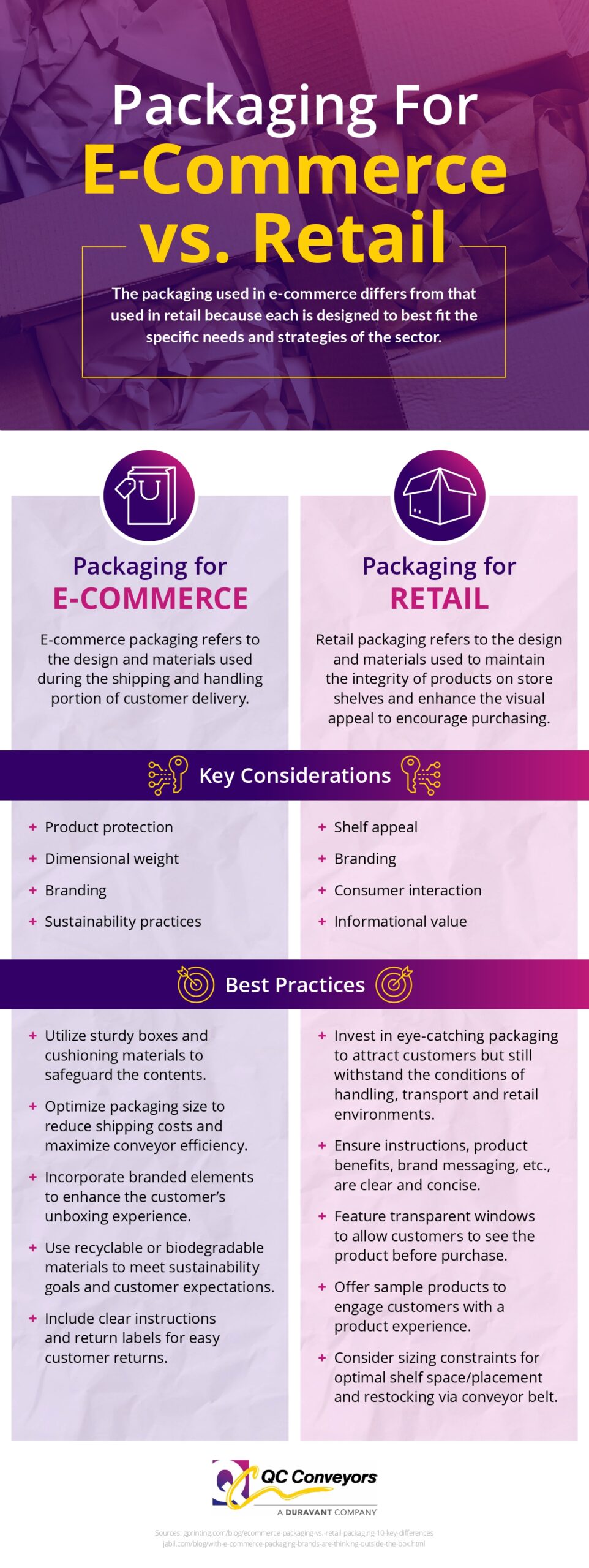Distinguishing between retail and e-commerce packaging is crucial for businesses seeking to refine their packaging strategies and drive profitability.
Retail packaging serves a dual purpose: capturing consumer attention while providing protection. It’s the interface between shoppers and physical stores, characterized by eye-catching designs, brand-centric color schemes, and highlighted features aimed at enticing buyers. The design of retail packaging significantly influences consumer choices, with many acknowledging its impact on their purchasing decisions. Additionally, retail packaging must be sturdy enough to withstand transit and handling.
On the other hand, e-commerce packaging prioritizes product protection during transit from warehouse to customer. It often utilizes robust materials like corrugated cardboard or bubble mailers to withstand the shipping process. While visual appeal may seem less critical for e-commerce packaging, it remains important. Incorporating brand imagery and creating a captivating unboxing experience can enhance brand loyalty and drive repeat purchases.
Brands recognize the significance of a unique unboxing experience in enhancing customer satisfaction and fostering loyalty. Therefore, e-commerce packaging should reflect the brand’s identity and create a memorable interaction for the customer.
For a deeper understanding of the nuances between e-commerce and retail packaging, as well as best practices, additional detailed resources are recommended.

Infographic created by QC Conveyors, innovators in automation conveyors to help streamline operations







